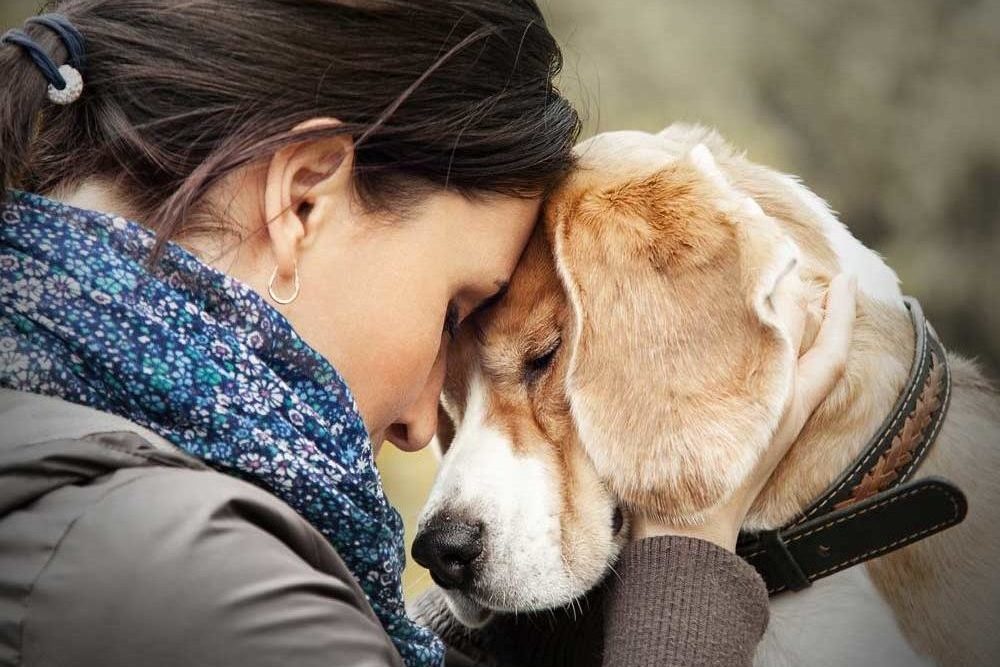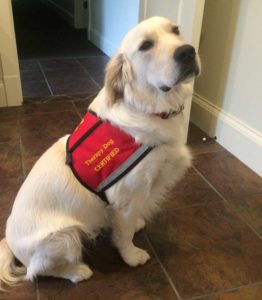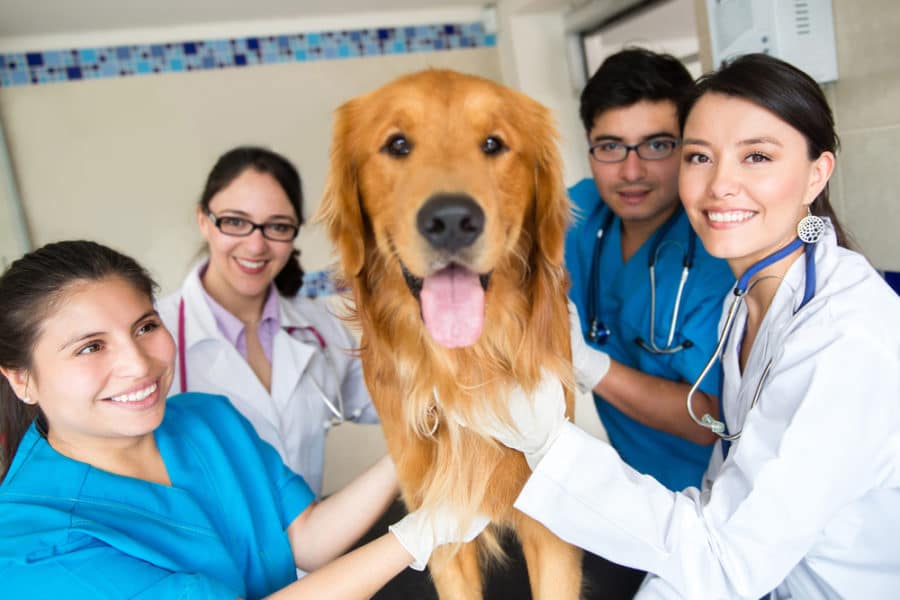Therapy dogs offering comfort to grieving families is a growing trend.
Therapy dogs are used in many settings, from schools and correctional facilities to hospitals and nursing homes. They brighten the lives of people of all ages, bringing comfort, love, healing and companionship to those in need of some extra TLC.
More recently, therapy dogs are also making an appearance in funeral homes, where they console bereaved families suffering through the loss of a loved one. In fact, some funeral homes consider their therapy dogs part of the staff because of the key role they play in helping grieving families, according to Jessica Koth, public relations manager for the National Funeral Directors Association.
“Therapy dogs have an amazing ability to put people at ease in a very emotional and difficult situation,” Jessica says. “I’ve heard of families coming into a funeral home to make arrangements for a loved one’s funeral, and when the therapy dog comes into the room, the mood changes and the family begins to open up and share their loved one’s story so the funeral director can help them understand how to plan a meaningful funeral.” She adds that some funeral homes also use their therapy dogs in the grief support groups they offer.
As the trend grows, Jessica says she sees more funeral homes choosing a certified therapy animal rather than just any dog. “This offers the funeral home owner the assurance that the dog will be able to have positive interactions and provide comfort to a wide range of people,” she says.
Lola
“Like most industries today, the funeral service is rapidly changing,” says Brian Merkle, president of Merkle Funeral Service in Monroe and Erie, Michigan. “We find it essential to constantly reinvent ourselves as professionals to find new ways of reaching our clients.” This includes incorporating a grief therapy dog into their services – in this case, a seven-year-old cockapoo named Lola.
Lola was originally the Merkle family dog, and was initially chosen because of the breed’s hypoallergenic qualities and minimal shedding. “From the moment we welcomed Lola into our family we knew she was different from any other dog we had previously shared our home with,” Brian says. “She has an amazing temperament and a gentle spirit, she rarely barks and has a quiet unassuming nature.”
Brian’s partner, Tammy, thought a therapy dog would be a great service to offer at the funeral home, so they took Lola to obedience training to prepare her for her future career. Renee Mullendore, who later joined the business as the funeral home’s outreach coordinator, researched the certification process for Lola and became her handler. Renee chose Therapy Dogs International to complete Lola’s therapy dog certification, and the little dog is now on staff to give comfort to the bereaved, and help bring smiles to sad faces.
Brian recalls one particularly moving funeral. “A young mother died unexpectedly, leaving several children, including a teenaged daughter, behind. The daughter was sitting in our lobby, crying uncontrollably. Lola knew she needed comfort, so she climbed up on the couch and lay right next to the emotional daughter. The girl soon began stroking Lola’s soft coat and stopped crying. Lola helped ease her burden, if only for a moment.”
Judd
Shari Wallace is the trainer and handler for Judd, a golden retriever and grief therapy dog at Armes-Hunt Funeral home in Fairmont and Marion, Indiana.
“Therapy dogs need basic obedience training,” she says. “They should pass the Canine Good Citizenship test through AKC, as well as therapy dog training, then be registered and certified.” Shari says the use of therapy dogs is fairly new to her area but that people have been very supportive. “They were wonderful about allowing me to take Judd into different businesses to expose him to real life situations as part of his training. People are also very excited and encouraging about this new trend in grieving.
“Interacting with and petting therapy dogs can reduce the stress hormone, cortisol, lower blood pressure, banish negative thoughts and ramp up the feel-good hormone, oxytocin,” Shari continues, adding that therapy dogs seem to have the ability to sense a person’s emotional needs and act on them with unconditional love. “Judd has developed his own signature act of comfort by lying on the grieving individual’s feet.”
Shari has seen firsthand how the act of petting, hugging, or simply touching Judd helps people relax. She cites one example involving a young girl. “The family came to the funeral home before the visitation was scheduled to start, and on entering, there sat Judd. A younger sister of the man who had passed immediately saw Judd and stopped in her tracks, knelt down and hugged him for a long time. Her tears began to flow as if she was passing her sorrow onto Judd, as if he would care for her and return love and comfort to her during her time of sorrow and loss.”
The use of grief therapy dogs in funeral homes is an extension of the services therapy dogs offer in the community. Adults and children, previously unable to openly discuss their losses, open up to the dogs, who provide a calm, loving presence to those in grief. Words aren’t required. As Jessica says: “Sometimes all it takes is a nuzzle from a wet nose to help people share their feelings and begin the healing process.”









